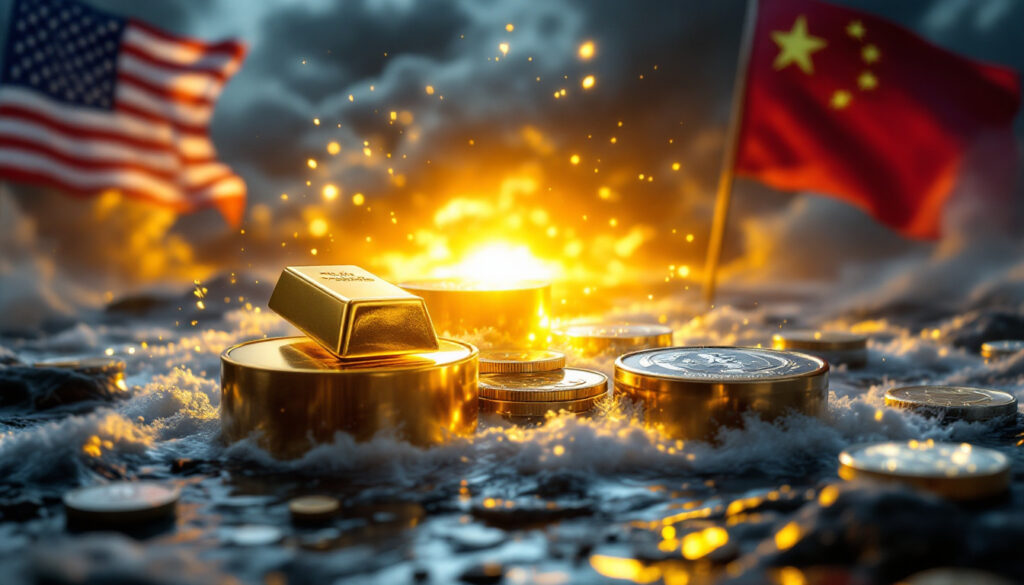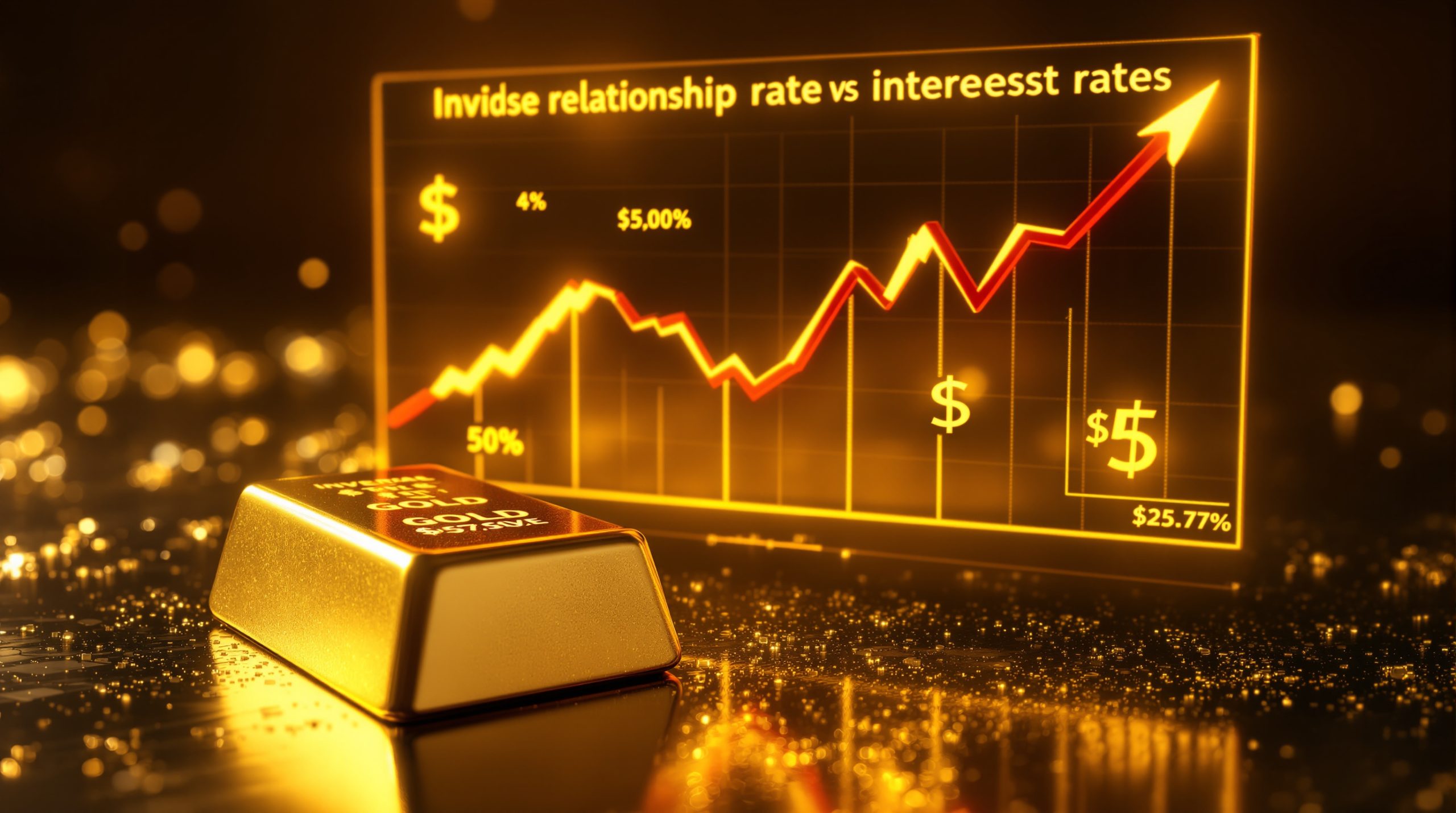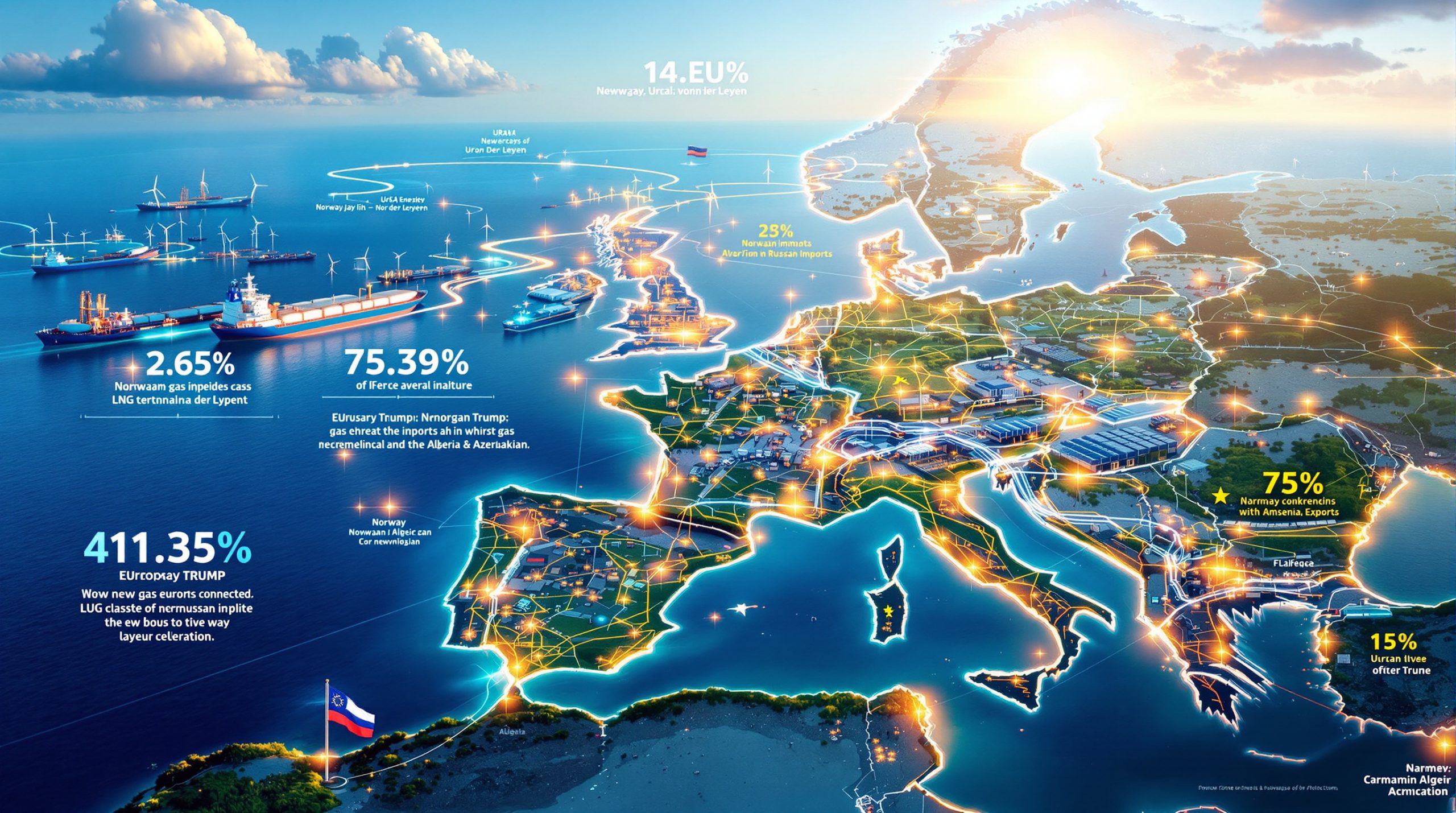How Did the Trade War Affect Gold and Silver Prices?
The recent escalation in trade tensions between the US and China has triggered remarkable volatility in precious metals markets. Gold surged dramatically to reach an intraday high of $3,101.40 before settling at $3,091.90, representing a substantial 3.6% increase or $106 gain in a single trading day. This extraordinary movement signals strong investor confidence in gold's role as a hedge during periods of geopolitical uncertainty.
Silver displayed even more impressive percentage gains, climbing from a low of $29.31 to $31.11 before closing at $31.07—a 3.79% increase equating to $1.13 per ounce. While platinum and palladium also recorded gains, they were notably less significant than those witnessed in gold and silver markets.
What makes these developments particularly noteworthy is that they occurred contrary to typical market patterns. Precious metals, especially gold, often experience downward pressure when stock markets decline. However, in this case, both stocks and metals moved upward simultaneously, with the Dow Jones Industrial Average gaining over 7% (approximately 2,600 points) and the NASDAQ climbing more than 12%.
"Gold remains bullish due to escalating trade tensions and prospects of lower US interest rates," notes Lukeman Otanuga, senior research analyst at FXTM. "A sustained breakout above the $3,055 level could signal further upside potential, particularly if geopolitical concerns intensify."
Key Factors Driving Precious Metals Prices
Several interconnected factors are propelling the current precious metals rally, with the trade war with China and its impact on gold and silver being the primary catalyst. The escalating tensions between the world's two largest economies have created a perfect storm for metals prices:
Rising US Treasury yields, typically an indicator of potential economic downturn, have paradoxically supported gold prices. While higher yields generally create headwinds for non-yielding assets like gold, in this context, they're being interpreted as warning signals of economic stress.
The weakening US dollar (with the DXY index down 1.2% in April 2025) has provided significant support for precious metals, which are priced in dollars and become more attractive to foreign buyers when the greenback declines.
Safe-haven demand has surged amid heightened political and financial uncertainty, with global central bank gold reserves increasing by 15% in 2025 according to IMF data. Institutional investors are allocating larger portfolio percentages to precious metals as a hedge against potential market disruptions.
What Triggered the Current Trade War Escalation?
The current trade conflict has its roots in a series of escalating moves that began in early April 2025. The timeline reveals how quickly tensions spiraled into a full-blown trade war affecting global markets.
Timeline of Recent Tariff Announcements
On April 2, 2025, the Trump administration announced the implementation of a sweeping 104% tariff on Chinese goods, targeting approximately $500 billion in Chinese exports with a focus on electronics, machinery, and manufacturing components. This move was justified under Section 301 of the Trade Act, which allows for tariffs in response to unfair foreign trade practices.
China responded within hours by announcing retaliatory tariffs on American exports, particularly targeting agricultural products, aircraft, and automobiles—sectors with significant political importance in key US states.
The US administration promptly countered with threats of additional tariffs, creating a classic "tit-for-tat" cycle that financial markets have struggled to predict or price in effectively. In a strategic move, the administration paused tariff implementation for over 75 nations willing to enter into bilateral trade negotiations with the United States.
This current trade conflict echoes warnings from decades past. During a 1992 presidential debate, businessman Ross Perot cautioned about China's military ambitions tied to trade imbalances—concerns that now appear prescient given the current geopolitical landscape.
Market Response to Trade War Developments
Market reactions to these developments have been notably strong, with equities performing surprisingly well alongside precious metals. The Dow Jones Industrial Average has gained over 7% (approximately 2,600 points) since the initial tariff announcements, while the technology-heavy NASDAQ has surged more than 12%.
Crude oil prices have also increased, reflecting concerns about potential supply chain disruptions and transportation costs that could affect global energy markets. These price movements suggest investors are pricing in both geopolitical risk and expectations of central bank interventions to counter economic headwinds.
Gold initially pared gains as Treasury yields rose but maintained an overall bullish trajectory as investors weighed immediate market optimism against longer-term economic concerns. Companies with significant exposure to China, including many S&P 500 multinationals like Apple and Tesla, have experienced heightened volatility as markets attempt to assess the potential impact on global commodity insights.
Why Are Gold and Silver Performing Differently in This Trade War?
While both gold and silver have demonstrated strength during this period of trade tensions, their performance characteristics and gold price drivers differ significantly, reflecting their distinct roles in the global economy.
Gold as a Safe Haven Asset
Gold's bullish outlook is supported by both the trade tensions and the prospect of lower US interest rates, which typically boost the appeal of non-yielding assets. Technical analysis shows key support levels for gold at the $2,950-$2,930 range, with resistance levels at $3,055 and potential for continued upward movement if these levels are breached convincingly.
The World Gold Council notes that central banks have accelerated gold purchases, adding credibility to gold's role as the ultimate store of value during periods of political and financial uncertainty. Gold's relative stability is also reflected in its 30-day volatility of 18%—notably lower than the S&P 500's 22% during the same period.
Gold's correlation with USD weakness has been particularly strong in recent months, with the metal gaining ground as the dollar index retreats. This relationship affirms gold's traditional role as a currency hedge and inflation protection vehicle during times of monetary uncertainty.
Silver's Unique Market Position
Silver consistently demonstrates more volatile price action than gold, with larger percentage swings that reflect its smaller market size and dual role as both a precious and industrial metal. Recently trading as high as $34 per ounce before the recent consolidation, silver has established a wide 52-week trading range of $29.31-$34.00.
Industrial demand factors create additional price pressures for silver, with approximately 60% of silver consumption tied to industrial applications including solar panels, electronics, and medical equipment. The metal's sensitivity to Chinese manufacturing PMI (which fell to 48.9 in Q1 2025) makes it particularly responsive to trade war developments.
Potential disruptions in electronics manufacturing due to China tariffs pose a complex challenge for silver price forecasting. While reduced industrial demand could create headwinds, silver's monetary aspects may compensate as investors seek alternatives to gold. The current gold/silver ratio of approximately 98:1 is historically high, suggesting potential for silver market surge if industrial concerns abate.
During the 2018 trade war phase, silver fell 15% amid factory slowdowns while gold rose 8%—a divergence that illustrates how differently these metals can behave during similar macroeconomic events.
What Are the Economic Implications of the US-China Trade War?
The economic ramifications of this trade conflict extend far beyond immediate market movements, potentially reshaping global trade patterns and supply chains for years to come.
Strategic Positioning of Both Nations
The United States maintains significant leverage in this trade dispute due to China's substantial trade surplus with the US. In 2024, this imbalance reached approximately $420 billion, reflecting China's greater dependence on American markets for economic stability. This asymmetry creates a fundamental advantage for the US in negotiations.
Chinese vulnerability stems from this export dependency, with potential disruptions threatening employment and growth targets. President Xi Jinping has characterized China's economy as "an ocean" facing choppy waves, acknowledging challenges while projecting confidence in the nation's economic resilience.
The potential economic "tsunami" effects on both economies remain concerning to global markets. Twenty-five percent of global electronics rely on Chinese components, creating complex interdependencies that cannot be quickly unwound. Similarly, American reliance on Chinese rare earth metals (with 80% imported from China) creates strategic vulnerabilities in high-tech manufacturing and defense industries.
The 2024 Taiwan Strait tensions demonstrated the fragility of these supply chains when disrupted chip shipments to companies like Apple and NVIDIA created manufacturing bottlenecks that extended far beyond the technology sector.
Broader Economic Concerns
Fears of a global recession triggered by trade tensions have prompted financial institutions to revise growth forecasts. Current projections place US GDP growth at 2.1% for 2025, compared to China's 4.3%—both figures representing downward revisions from pre-trade war estimates.
Disruption of supply chains remains a primary concern, particularly for electronics and manufacturing sectors dependent on just-in-time inventory systems. Vietnam's manufacturing boom exemplifies how trade disputes can rapidly reshape regional economic dynamics as firms seek to diversify production away from China.
The potential impact on US consumers through higher prices for everyday goods represents a significant political risk factor. Historical precedent from the 1930 Smoot-Hawley Act demonstrates how tariffs can exacerbate economic downturns, with many economists attributing the deepening of the Great Depression partially to protectionist trade policies.
Long-term strategic competition between the world's two largest economies suggests this trade conflict may represent a structural shift rather than a temporary disruption, requiring businesses to develop more resilient and diversified supply chains.
How Should Investors Respond to Trade War Uncertainty?
Navigating the investment landscape during a trade war requires balancing defensive positioning with opportunities created by market dislocations.
Investment Considerations for Precious Metals
Investors contemplating precious metals purchases amid rising prices should consider the historical pattern of consolidation periods following all-time highs, particularly for gold. While market momentum currently favors higher prices, the rapid ascent suggests increased volatility ahead.
Goldman Sachs and other major investment banks recommend a 5-10% portfolio allocation to precious metals during periods of heightened geopolitical tension, providing a calibrated approach to balancing risk and reward.
Those seeking exposure to the sector should prepare for continued volatility as trade negotiations evolve. The current tariff implementation represents the most widespread application of protectionist measures in over 100 years, with the closest historical parallel being the McKinley-era tariffs of the 1890s, which averaged 48% on manufactured goods.
For cost-conscious investors, dollar-cost averaging programs like those offered by bullion dealers provide a methodical approach to building positions despite price volatility. This strategy allows investors to accumulate positions without attempting to time market peaks and troughs.
Portfolio Diversification Strategies
Precious metals continue to serve a vital role as a hedge against market uncertainty, with their low correlation to traditional financial assets enhancing portfolio resilience. During recent market turbulence, physical metals have demonstrated different risk characteristics than mining stocks, which remain subject to broader equity market forces.
Investors should consider balancing exposure to both industrial and monetary metals based on their risk tolerance and economic outlook. Silver's beta to gold of approximately 1.5x indicates higher risk/reward potential, making it appropriate for investors with longer time horizons or greater risk tolerance.
Monitoring key technical levels for entry and exit points remains essential for active traders. CME Group futures data suggests maintaining awareness of support levels at $2,950-$2,930 for gold and $29.31 for silver, which formed a "double bottom" pattern indicating potential price stabilization.
Stress-testing portfolios against stagflation scenarios has become increasingly important as trade tensions threaten to simultaneously slow growth and increase consumer prices. In such environments, precious metals historically outperform both bonds and equities, suggesting increased allocation during periods of economic uncertainty.
Many investors are exploring gold ETF strategies as a convenient way to gain exposure without the logistics of physical storage. The trade war with China and its impact on gold and silver has made these investment vehicles particularly attractive for those seeking portfolio protection.
FAQ About the Trade War and Precious Metals
How does a trade war typically affect precious metals prices?
Trade wars create economic uncertainty and often weaken currencies, driving investors toward safe-haven assets like gold and silver. Gold typically performs more consistently as a pure monetary metal, while silver can experience more volatility due to its industrial applications. According to IMF data, global gold reserves increased 15% in 2025 as central banks accelerated diversification away from traditional currency reserves. During previous trade tensions, precious metals have outperformed broader market indices by an average of 12% over 6-month periods.
What are the key price levels to watch for gold and silver?
For gold, key support levels are around $2,950-$2,930, with resistance at $3,055 and potential for movement above $3,100 if geopolitical tensions escalate further. Silver has shown strong support around $29.31 (forming a technical "double bottom" pattern) with resistance at its recent high of $31.11. Breaking through these levels could signal significant directional movements, particularly if accompanied by unusual trading volume. Technical analysts monitor the gold/silver ratio (currently near 98:1) as an indicator of relative value between the metals.
How does the current trade war compare to historical tariff conflicts?
The current implementation of widespread tariffs is unprecedented in modern economic history, with the last comparable situation occurring during the McKinley administration of the late 1890s, when tariffs averaged 48% on manufactured goods. More recently, the 1930 Smoot-Hawley Act imposed duties averaging 45-50%, which economists widely believe exacerbated the Great Depression by reducing global trade by nearly two-thirds. Today's global economy is significantly more interconnected, suggesting potentially greater ripple effects from protectionist measures.
What factors beyond the trade war are influencing precious metals prices?
Rising Treasury yields, potential interest rate adjustments by central banks, dollar strength/weakness, and broader economic indicators all play significant roles in determining precious metals price movements alongside geopolitical tensions. The Federal Reserve's projected rate cuts in Q3 2025 could provide additional support for gold prices by reducing the opportunity cost of holding non-yielding assets. Physical supply constraints, particularly in silver mining where production declined 2.3% in 2024, create potential for price spikes during periods of heightened demand. Technological developments in renewable energy continue to influence industrial demand for silver, creating price support independent of monetary factors.
Want to Catch the Next Major ASX Resource Discovery?
Discovery Alert's proprietary Discovery IQ model provides instant notifications on significant ASX mineral discoveries, helping you stay ahead of market movements during uncertain economic times like trade wars. Explore how major discoveries can lead to substantial returns by visiting our dedicated discoveries page and start your 30-day free trial today.




